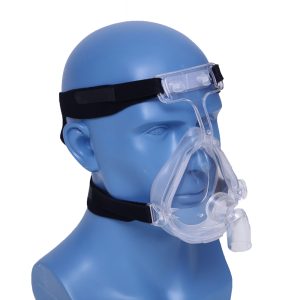A CPAP (Continuous Positive Airway Pressure) machine is not an oxygen mask, though it is often mistaken for one due to its appearance and function. Here’s a detailed explanation of what a CPAP machine is, how it works, and how it differs from an oxygen mask.
What is a CPAP Machine?
A CPAP machine is a medical device used primarily to treat sleep apnea, a condition where a person’s airway becomes blocked during sleep, causing them to stop breathing temporarily. The CPAP machine works by delivering a continuous stream of pressurized air through a mask worn over the nose or mouth. This positive pressure helps keep the airway open, preventing the pauses in breathing that characterize sleep apnea.
How Does CPAP Work?
The CPAP machine includes a motor that generates air pressure, a hose to deliver the air, and a mask to wear during sleep. The air pressure is set to a level tailored to the patient’s needs, which is often determined during a sleep study. This continuous air pressure ensures the airway remains open, facilitating uninterrupted breathing throughout the night.
Differences Between CPAP and Oxygen Masks
- Purpose:
– CPAP Machine: Primarily used to treat obstructive sleep apnea by providing continuous air pressure to keep the airway open.
– Oxygen Mask: Used to deliver supplemental oxygen to patients with respiratory issues, such as chronic obstructive pulmonary disease (COPD), pneumonia, or other conditions that impair the body’s ability to intake or utilize oxygen.
- Air Composition:
– CPAP Machine: Delivers ambient air at a higher pressure, not enriched with additional oxygen.
– Oxygen Mask: Delivers air enriched with higher concentrations of oxygen, often sourced from an oxygen tank or concentrator.
- Use Case:
– CPAP Machine: Used primarily at night for sleep apnea patients to ensure they breathe continuously and sleep better.
– Oxygen Mask: Can be used anytime oxygen levels need to be increased in the bloodstream, including during emergencies, surgeries, or chronic care.
- Components:
– CPAP Machine: Includes a motor, hose, and a mask (nasal or full face).
– Oxygen Mask: Typically consists of an oxygen delivery device, tubing, and a mask that covers the nose and mouth or just the nose.
Benefits of CPAP
CPAP therapy provides several benefits to those with sleep apnea, including:
– Improved quality of sleep.
– Reduced daytime sleepiness.
– Lowered risk of heart disease, stroke, and other sleep apnea-related complications.
– Enhanced overall quality of life.
Side Effects and Considerations
While CPAP is generally safe, some users might experience discomfort, such as:
– Dry mouth or nasal passages.
– Skin irritation from the mask.
– Difficulty adjusting to the sensation of pressurized air.
Cost and Accessibility
CPAP machines can vary in cost depending on their features. Standard CPAP machines can range from $300 to $800, while more advanced models or travel CPAP machines can be more expensive, typically between $600 and $900.
Conclusion
In summary, while a CPAP machine may look similar to an oxygen mask, it serves a different purpose and functions differently. The CPAP machine is designed to keep the airway open with pressurized air to treat sleep apnea, whereas an oxygen mask delivers supplemental oxygen for various respiratory conditions. Understanding the differences between these devices helps ensure they are used appropriately for their intended medical purposes.



